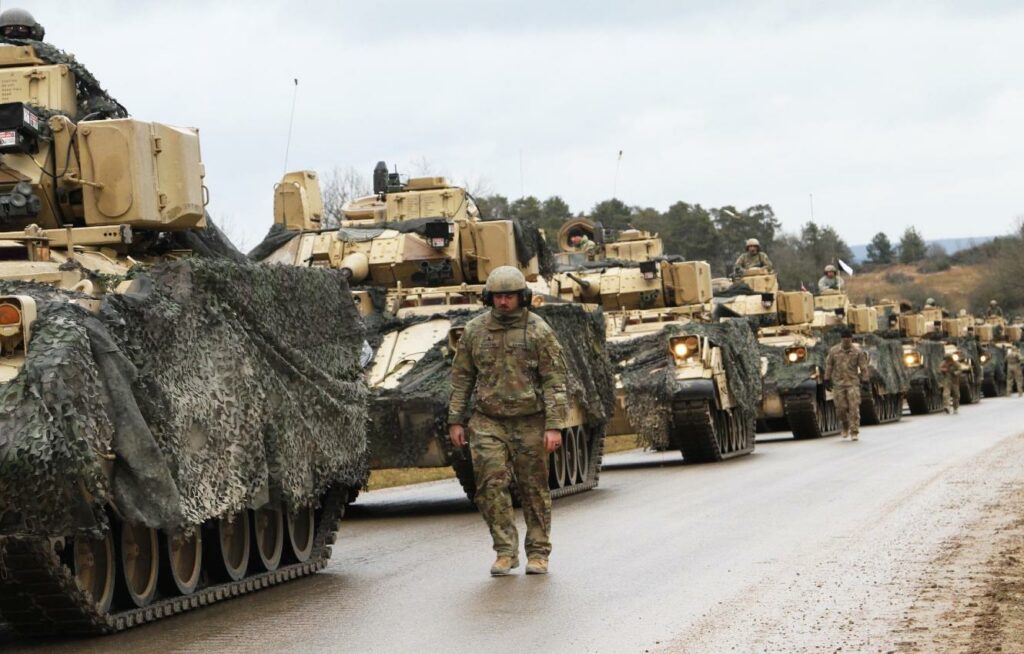Over the past several years, the United States military presence in Syria has been a source of debate and controversy, with advocates arguing for the importance of maintaining a strong presence in the region to combat terrorism and protect American interests, while critics question the legality and efficacy of such actions. Despite the substantial risks involved, the prospect of complete withdrawal also raises concerns about the potential consequences for stability and security in the region. In this article, we will explore the complexities and challenges surrounding the US military presence in Syria and the implications of a possible withdrawal.
Implications of US Military Presence in Syria
One of the main implications of the US military presence in Syria is the potential for escalating tensions with other foreign powers. The region is already a hotbed of conflict, with various countries and factions vying for control. The presence of US troops could further complicate an already volatile situation, potentially leading to clashes with Russian or Iranian forces. This not only puts American soldiers at risk but also raises the possibility of a larger military confrontation.
On the other hand, a complete withdrawal of US forces from Syria carries its own set of risks. Without a stabilizing force in the region, there is a higher chance of power vacuums being filled by extremist groups like ISIS. Additionally, abandoning Kurdish allies who have helped in the fight against terrorism could damage US credibility and alliances in the region. It’s a delicate balance between staying engaged in Syria and avoiding unnecessary conflicts, but the consequences of either decision are significant.
Potential Risks of a Complete Withdrawal
In considering the of US military presence in Syria, it is crucial to acknowledge the complex geopolitical dynamics at play. One major concern is the power vacuum that could be created, leading to increased instability and the resurgence of terrorist groups such as ISIS. Without a strong military presence to provide security and support for local allies, there is a real risk of regional destabilization.
Moreover, a hasty withdrawal could damage America’s credibility on the international stage, potentially jeopardizing relationships with allies and undermining efforts to promote peace and security in the region. It is essential to carefully weigh the consequences of a complete withdrawal against the risks of maintaining a military presence in the region. The decision must be made with a thorough understanding of the potential repercussions and a clear strategy for mitigating any negative outcomes.
| Risk | Consequence |
|---|---|
| Power Vacuum | Increased instability and resurgence of terrorist groups |
| Damage to US credibility | Jeopardizing relationships with allies and undermining peace efforts |
Balancing National Security Interests with Risk Management in Syria
As the United States navigates its military presence in Syria, striking a balance between national security interests and risk management is crucial. The decision to maintain troops in the region carries substantial risks, including the potential for escalation of conflict with various actors in the complex Syrian civil war.
On the other hand, a complete withdrawal of US military forces from Syria also poses significant risks, such as creating a power vacuum that could be exploited by hostile groups. By carefully considering the various risks and benefits involved, policymakers must tread carefully to ensure that the best course of action is taken to protect national security interests while minimizing potential threats.
Recommendations for a Strategic Approach to US Involvement in Syria
Given the complexities of the situation in Syria, it is crucial that the US takes a strategic approach to its involvement in the region. While the risks of maintaining a military presence in Syria are substantial, it is also important to consider the risks of a complete withdrawal. Here are some recommendations for navigating this delicate balance:
- Continue diplomatic efforts: It is essential for the US to prioritize diplomatic solutions in Syria to prevent further escalation of conflict.
- Support local partners: Working with local forces on the ground can help achieve strategic objectives without the need for a large US military presence.
- Coordinate with international allies: Collaborating with allies in the region can help ensure a unified approach to the conflict in Syria.
The Way Forward
While the debate over the US military presence in Syria continues, one thing is clear – the decision to stay or withdraw carries substantial risks either way. The complex dynamics of the Syrian conflict make this a challenging issue to navigate, with no easy answers or guaranteed outcomes. As policymakers weigh the potential consequences of their actions, it is crucial to consider the long-term implications and strive for a balanced approach that prioritizes stability and security for all parties involved. Ultimately, the future of US involvement in Syria will be shaped by careful deliberation and thoughtful consideration of the risks and benefits at stake.


